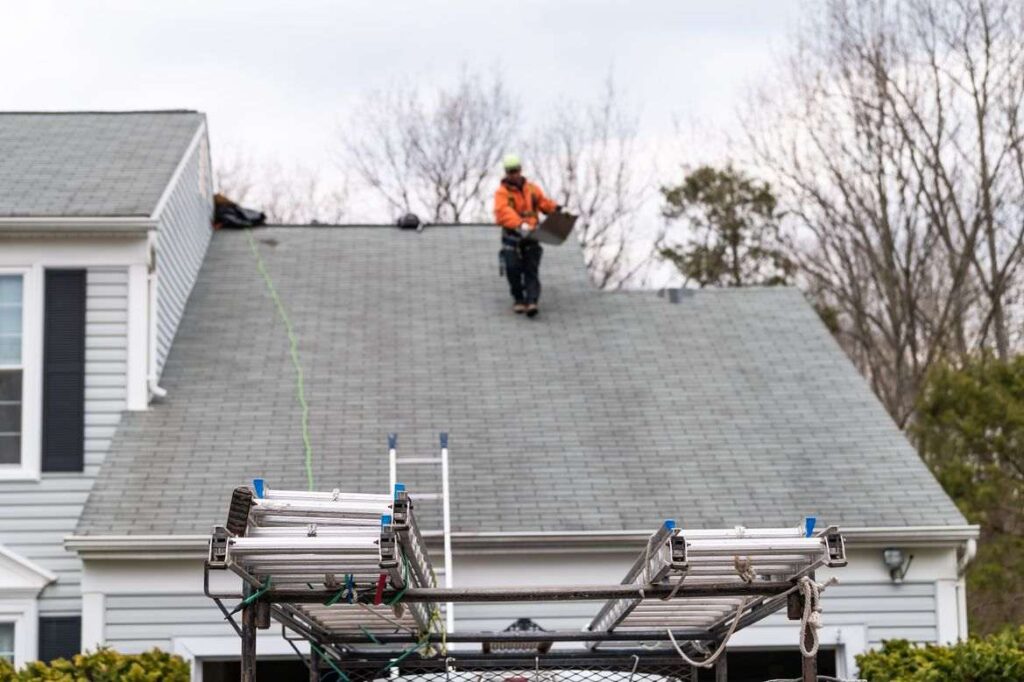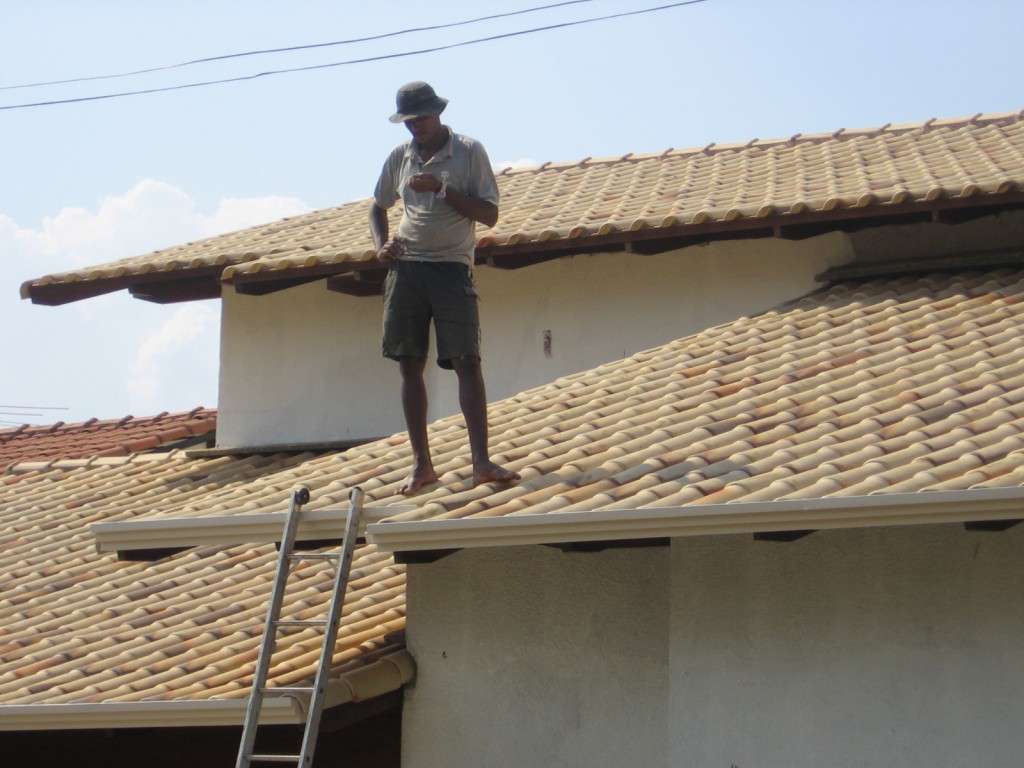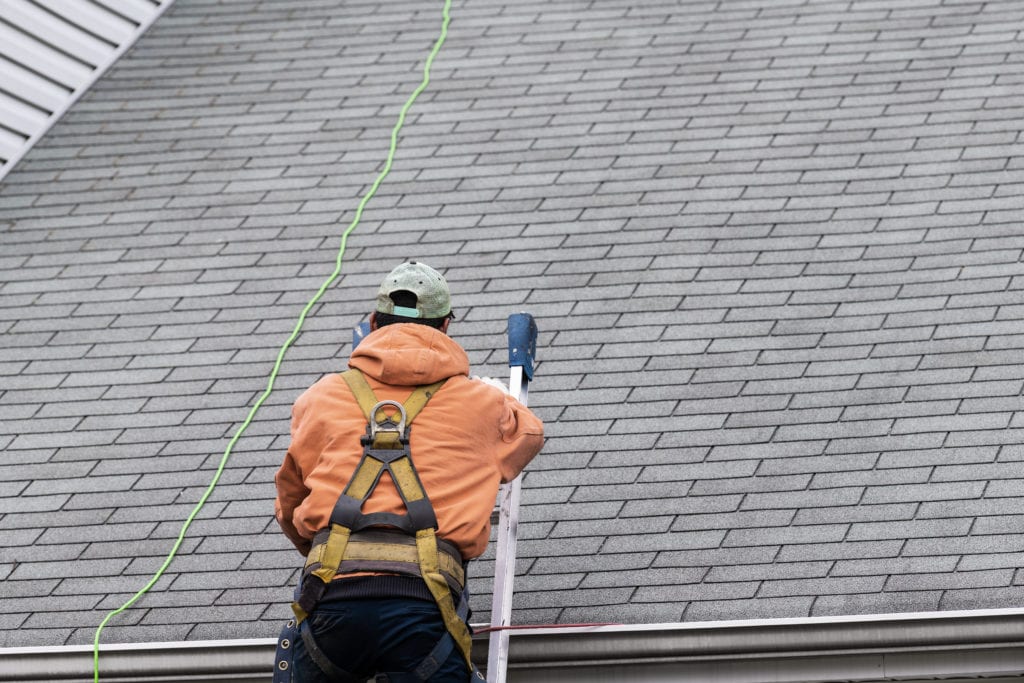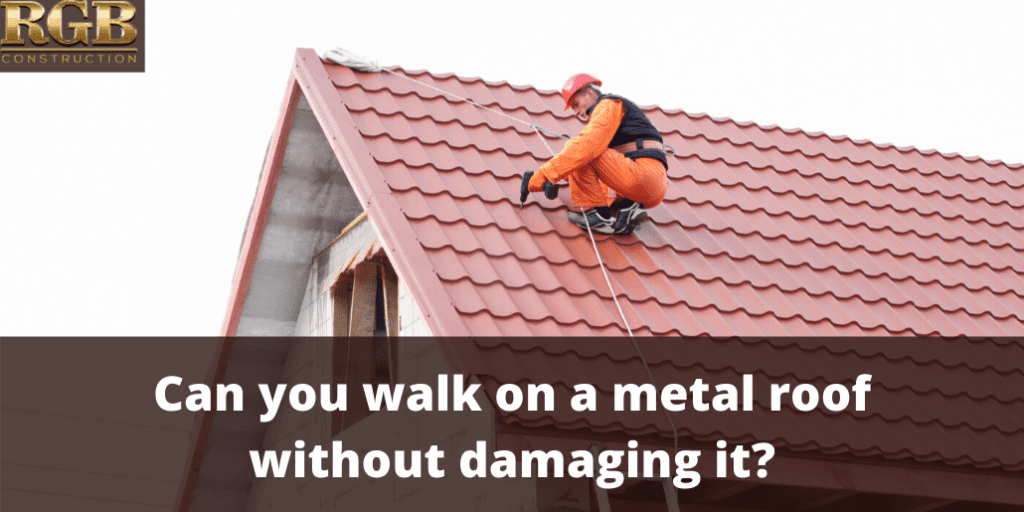Walking on a house roof is a common question among homeowners, but is it actually safe to do so? In this article, we will explore the potential risks and benefits of walking on house roofs, discussing the factors that should be considered before venturing onto your roof. By understanding the potential consequences and how to minimize any damage, you can make an informed decision about whether it is appropriate to walk on your house roof.

Types of Roofing Materials
Asphalt Shingles
Asphalt shingles are the most common type of roofing material due to their affordability and durability. They are made from a combination of asphalt, fiberglass, and ceramic granules. Asphalt shingles are available in a variety of colors and styles, making them a versatile option for any home. They are relatively easy to install and require minimal maintenance.
Metal Roofs
Metal roofs are growing in popularity due to their longevity and energy-efficient properties. They are made from materials such as aluminum, steel, or copper and can last up to 50 years or more. Metal roofs are resistant to fire, pests, and rot and are highly durable, making them a great option for areas prone to extreme weather conditions.
Tile Roofs
Tile roofs are known for their classic and elegant appearance. They are commonly made from materials like clay or concrete and come in various shapes, sizes, and colors. Tile roofs are durable and can last for over 100 years with proper maintenance. They are resistant to fire, insects, and rot. However, they can be quite heavy and may require additional structural support.
Wood Shakes
Wood shakes offer a natural and rustic look to a home. They are traditionally made from cedar or redwood and provide excellent insulation. Wood shakes can last for several decades when properly maintained. However, they are more susceptible to fire and require regular treatment to prevent decay and pests.
Factors to Consider
Roof Pitch
The pitch or slope of your roof plays a crucial role in determining whether it is safe to walk on. Steep roofs with a high pitch can be dangerous to walk on, as it increases the risk of slipping or falling. It is best to consult a professional roofing contractor to assess the pitch of your roof and determine if it is safe for walking.
Weather Conditions
Weather conditions can impact the safety of walking on a roof. Wet or icy conditions can make the surface slippery, increasing the risk of accidents. It is advisable to avoid walking on the roof during inclement weather and wait for more favorable conditions.
Roof Age
The age of your roof is another factor to consider before walking on it. Older roofs may have weakened or deteriorated materials, making them more susceptible to damage. If your roof is nearing the end of its lifespan, it is best to avoid walking on it to prevent further deterioration.
Roof Condition
The overall condition of your roof is crucial in determining its ability to withstand foot traffic. If your roof has existing issues such as leaks, damaged shingles, or weak areas, walking on it can exacerbate these problems. It is important to conduct regular inspections and address any necessary repairs before attempting to walk on the roof.
Repair History
Consider the repair history of your roof before deciding to walk on it. If your roof has had a history of repairs or has undergone major renovations, it may not be structurally sound enough to support foot traffic. It is best to consult a professional to assess the condition of your roof and determine if it is safe to walk on.

Benefits of Walking on House Roof
Inspection and Maintenance
Walking on your house roof allows for a closer inspection of its condition. You can identify and address any issues such as damaged shingles, leaks, or gutter problems. Regular inspections can help prevent minor issues from escalating into costly repairs.
Cleaning Gutters
Cleaning gutters is an essential part of roof maintenance. Walking on the roof enables you to access the gutters easily and remove any debris, leaves, or twigs. By keeping the gutters clear, you can prevent water backup and potential water damage to your home.
Installing or Repairing Equipment
Walking on the roof provides an opportunity to install or repair equipment such as satellite dishes, TV antennas, or solar panels. By doing it yourself, you can save money on installation costs and ensure the equipment is properly secured.
Risks of Walking on House Roof
Damage to Roofing Material
Walking on the roof can cause damage to roofing materials, especially if proper precautions are not taken. The weight and pressure exerted on the roof can result in cracked or broken shingles, dislodged tiles, or dented metal panels. It is essential to tread carefully and avoid unnecessary foot traffic to minimize the risk of damage.
Accidents and Injuries
Walking on a house roof can be dangerous, especially for those without experience or proper safety measures. Slipping, tripping, or falling from the roof can lead to serious injuries. It is important to prioritize safety and take necessary precautions to minimize the risk of accidents.
Voiding Warranty
Some roofing materials come with warranties that may be voided if the roof is walked on without following specific guidelines. It is crucial to review the warranty details provided by the manufacturer and adhere to any restrictions regarding foot traffic on the roof.

Safety Precautions
Wear Protective Gear
When walking on the roof, it is essential to wear appropriate protective gear such as a helmet, safety goggles, and gloves. These items can provide added protection in case of accidents or falls.
Use Proper Footwear
Invest in suitable footwear with non-slip soles to ensure traction on the roof surface. Avoid wearing shoes with heels or smooth soles that can increase the risk of slipping.
Choose the Right Time
Select a time when the weather conditions are favorable, and the roof surface is dry. Avoid walking on the roof during rainy or icy conditions, as this can make the surface slippery and unsafe.
Ensure Proper Weight Distribution
Distribute your weight evenly when walking on the roof by stepping on sturdy areas such as rafters or beams. Avoid putting excessive pressure on weak spots or vulnerable roofing materials.
When It’s Safe to Walk on the Roof
Designed for Foot Traffic
Some roofing materials are specifically designed to withstand foot traffic. For example, certain types of metal roofs have textured surfaces that enhance grip and durability, making them safe to walk on. Check with the manufacturer or a roofing professional to determine if your roof is suitable for walking.
Flat or Low-Slope Roofs
Flat or low-slope roofs are generally safer to walk on compared to steep roofs. The level surface provides more stability and reduces the risk of accidents. However, it is still important to take safety precautions and assess the condition of the roof before walking on it.
Safety Features in Place
Certain roofs may have safety features such as guardrails, walkways, or anchor points installed for easy and safe access. If these features are present, it indicates that the roof has been designed with foot traffic in mind and may be suitable for walking.

Alternatives to Walking on the Roof
Using a Ladder
Instead of walking directly on the roof, using a ladder can be a safer option for accessing specific areas. You can place the ladder securely and work from there without putting unnecessary stress on the roof.
Using Roofing Equipment
Investing in specialized roofing equipment such as scaffolding or a cherry picker can provide a stable platform for performing maintenance tasks without the need to physically walk on the roof. This equipment offers added safety and stability, particularly for larger or complex roofing projects.
Hiring Professionals
If you are uncertain about your ability to safely navigate the roof or lack the necessary skills and equipment, it is best to hire professional roofers. They have the expertise, knowledge, and proper safety measures to carry out inspections, repairs, or maintenance efficiently and effectively.
Common Roofing Issues to Look Out For
Missing or Damaged Shingles
Inspect your roof for any missing or damaged shingles. These can lead to leaks, water damage, or further deterioration of the roofing material. Promptly replace or repair any shingles that are compromised.
Leaks and Water Damage
Water leaks can cause significant damage to your home. Look out for signs of water stains, mold growth, or dampness on the ceiling or walls. Address any leaks immediately to prevent further harm.
Mold or Algae Growth
Excessive moisture or poor ventilation can lead to the growth of mold or algae on your roof. These organisms can deteriorate the roofing material and compromise the structural integrity of your roof. Regular cleaning and maintenance can help prevent mold or algae growth.

Pros and Cons of DIY Roof Maintenance
Cost Savings
Performing your own roof maintenance can save you money on professional services. You can address minor issues and carry out routine inspections on your own, eliminating the need for regular contractor visits.
Time and Effort
Roof maintenance can be time-consuming and physically demanding. DIY maintenance requires planning, research, and the dedication of your time and effort. Consider whether you have the skills, patience, and availability to commit to regular maintenance tasks.
Risk of Further Damage
Inexperienced individuals attempting roof maintenance may inadvertently cause further damage to the roof. Without proper knowledge and expertise, it is easy to overlook potential issues or perform improper repairs. If in doubt, it is advisable to consult a professional roofer to avoid exacerbating existing problems.
Conclusion
Walking on your house roof can be beneficial for inspection, maintenance, and performing certain tasks. However, it is essential to consider various factors such as roof type, condition, and safety precautions before attempting to walk on the roof. Taking the necessary precautions and exploring alternative methods can help ensure your safety and prevent any potential damage to your roof. Remember, when in doubt, it is always best to consult a professional roofing contractor for guidance and assistance.